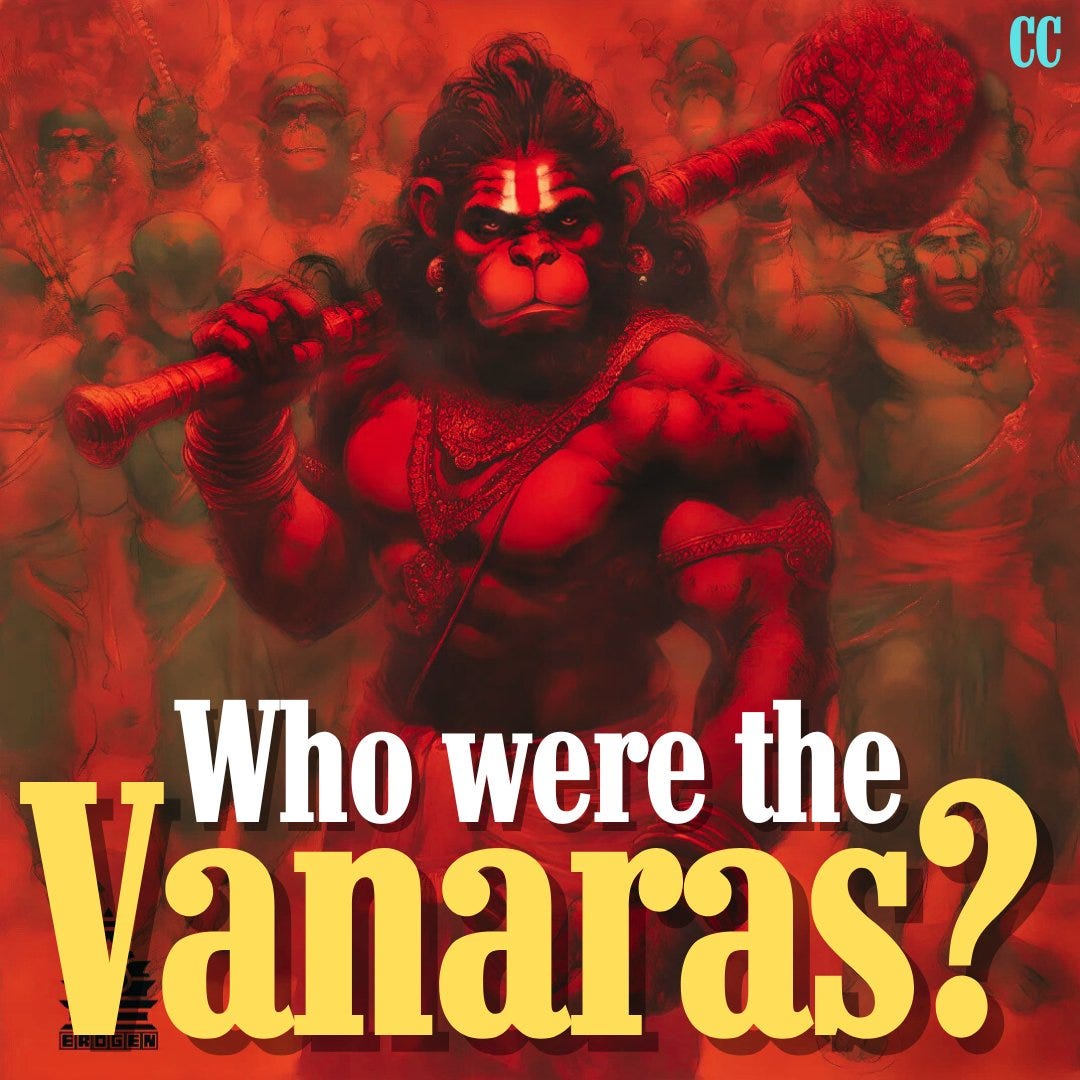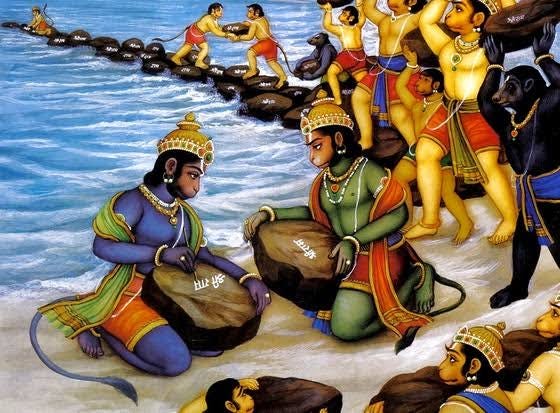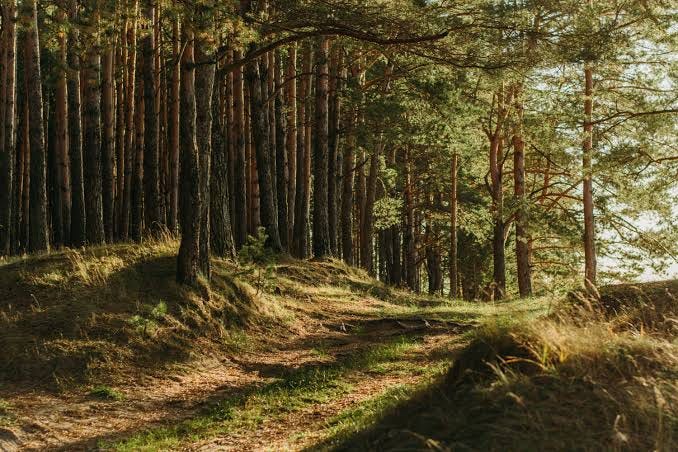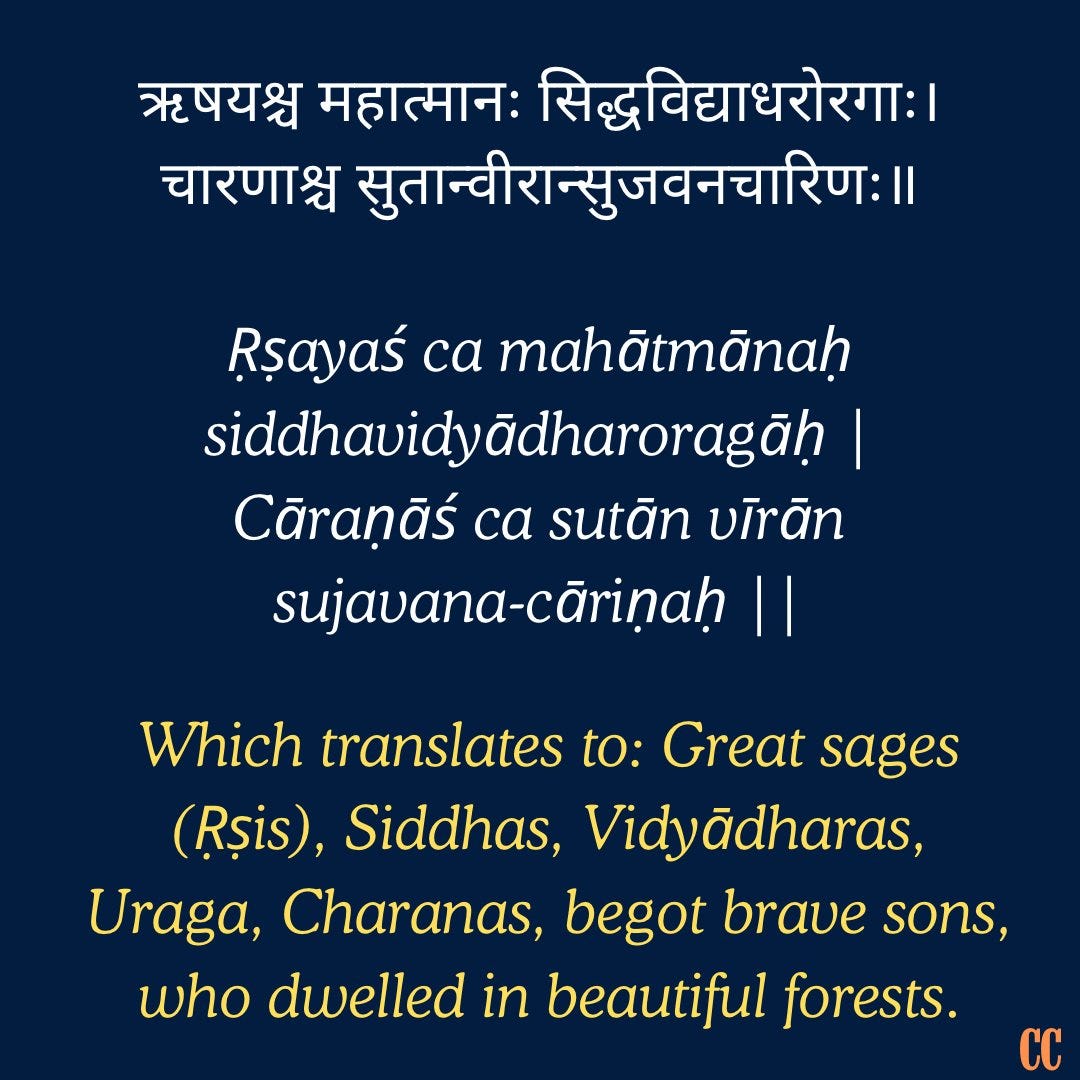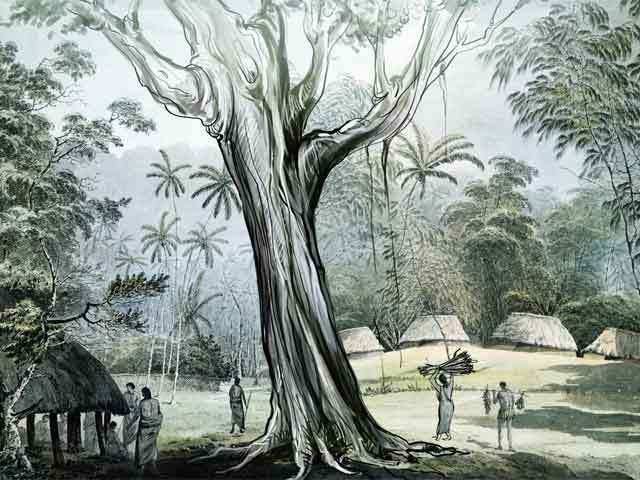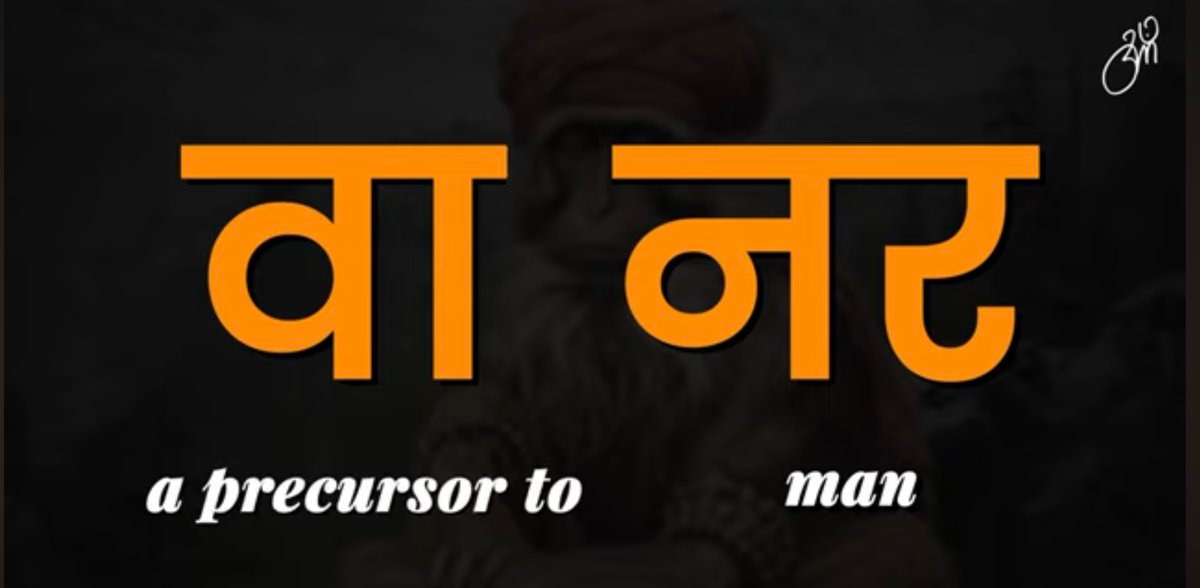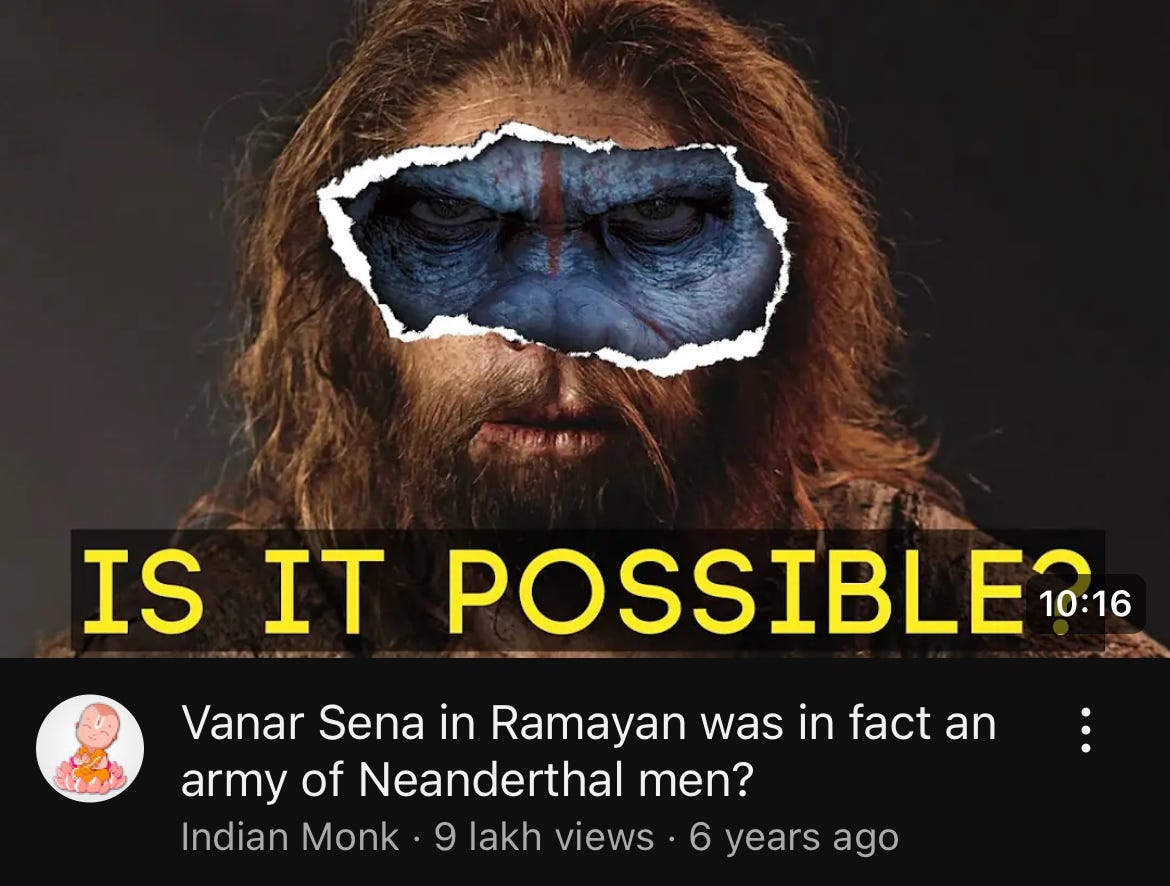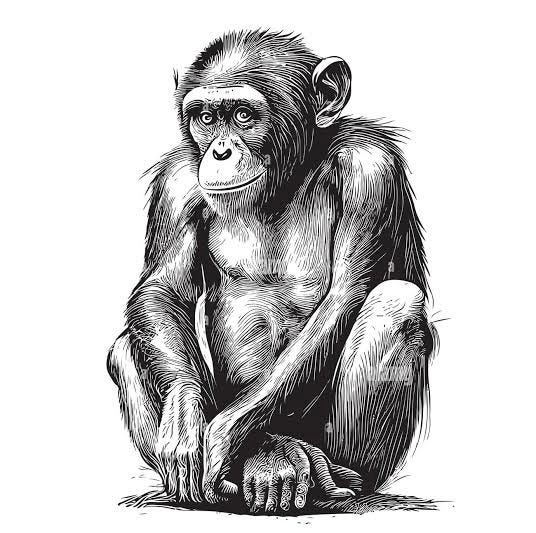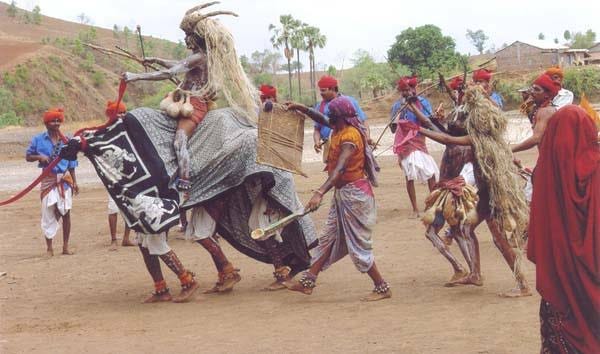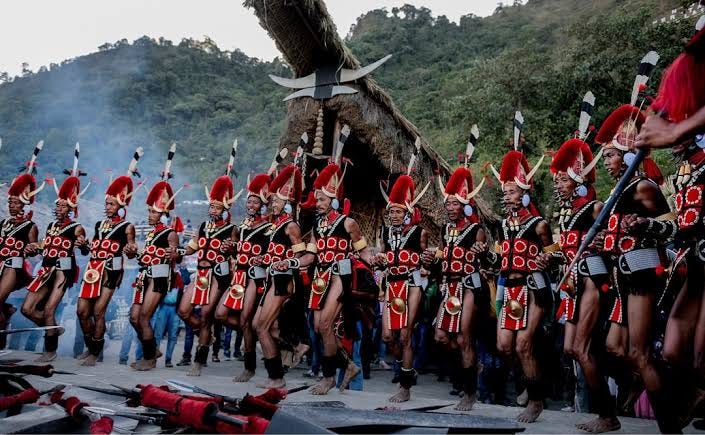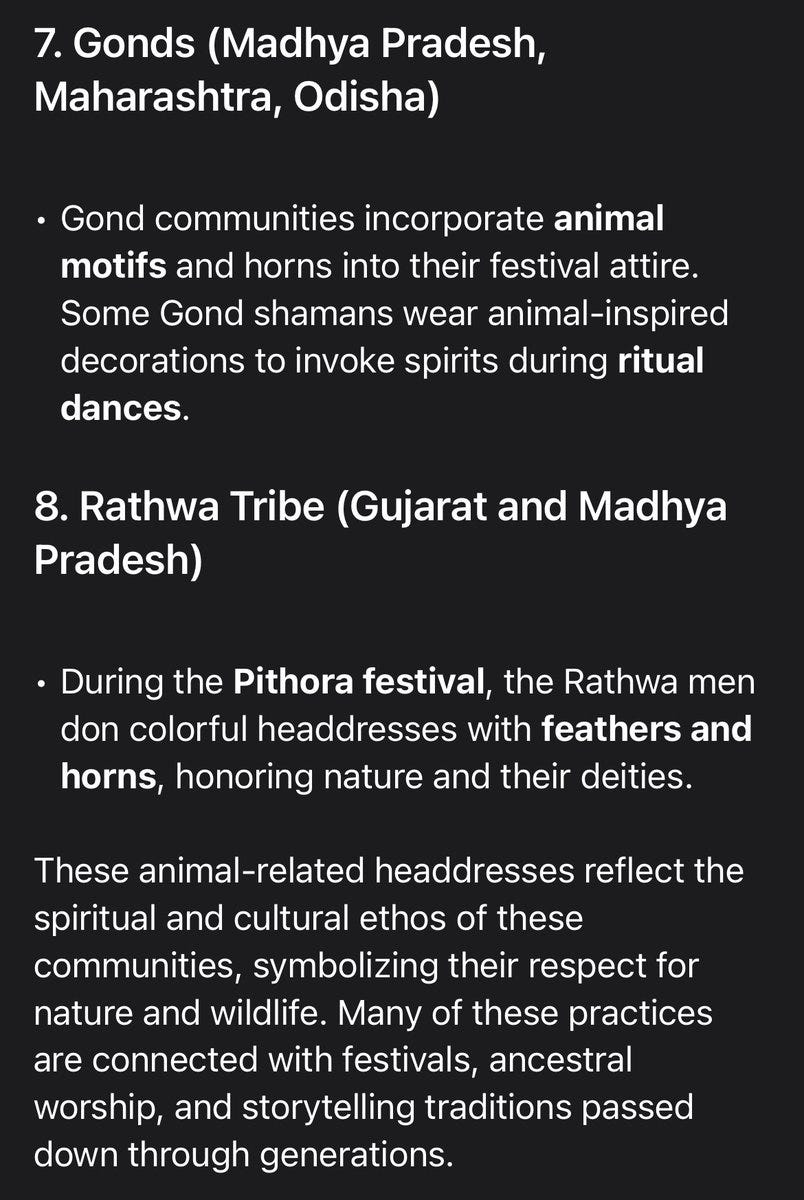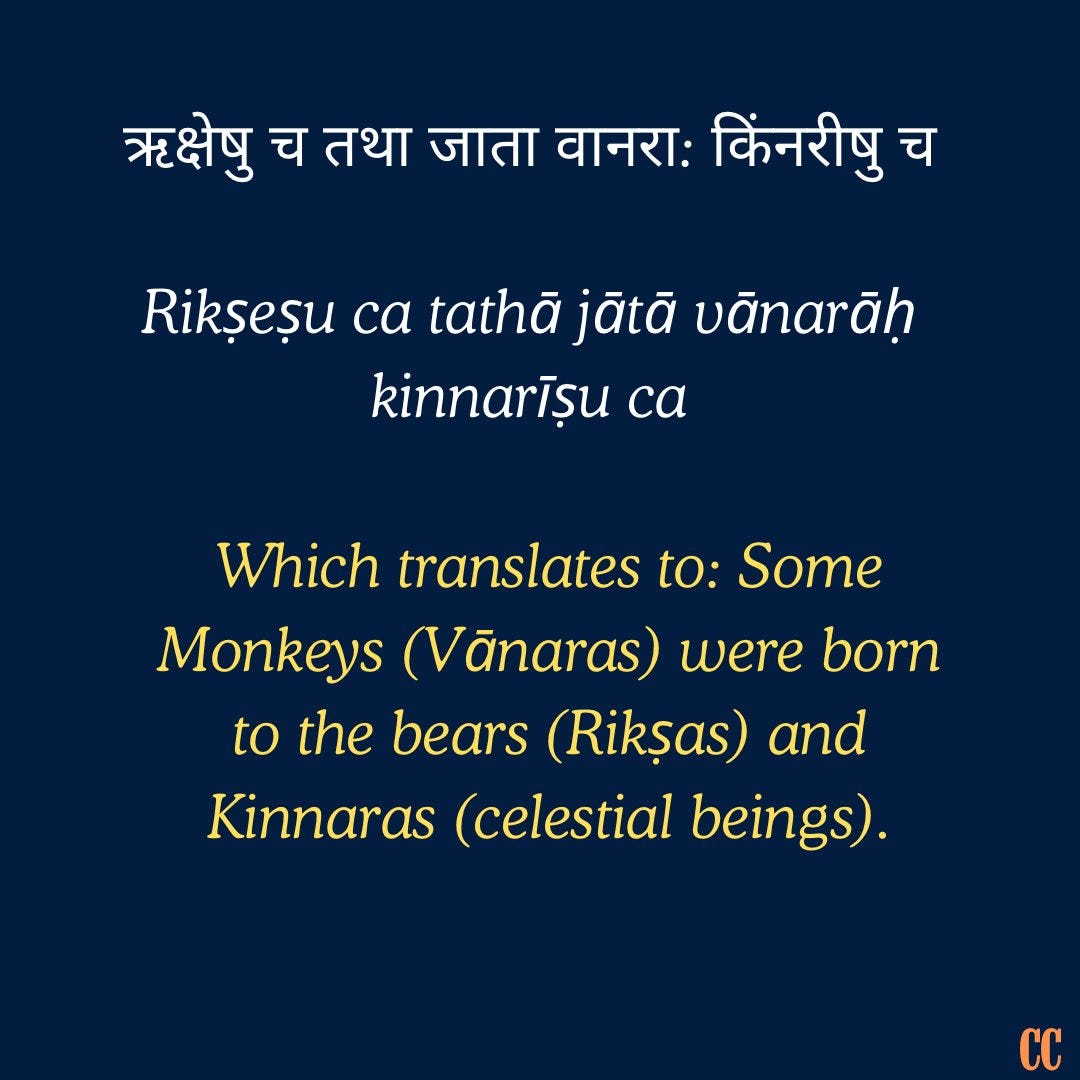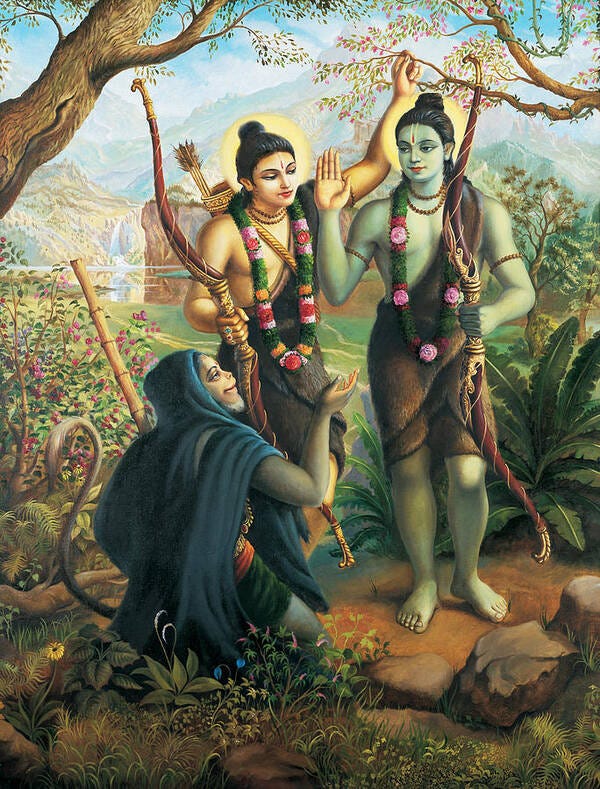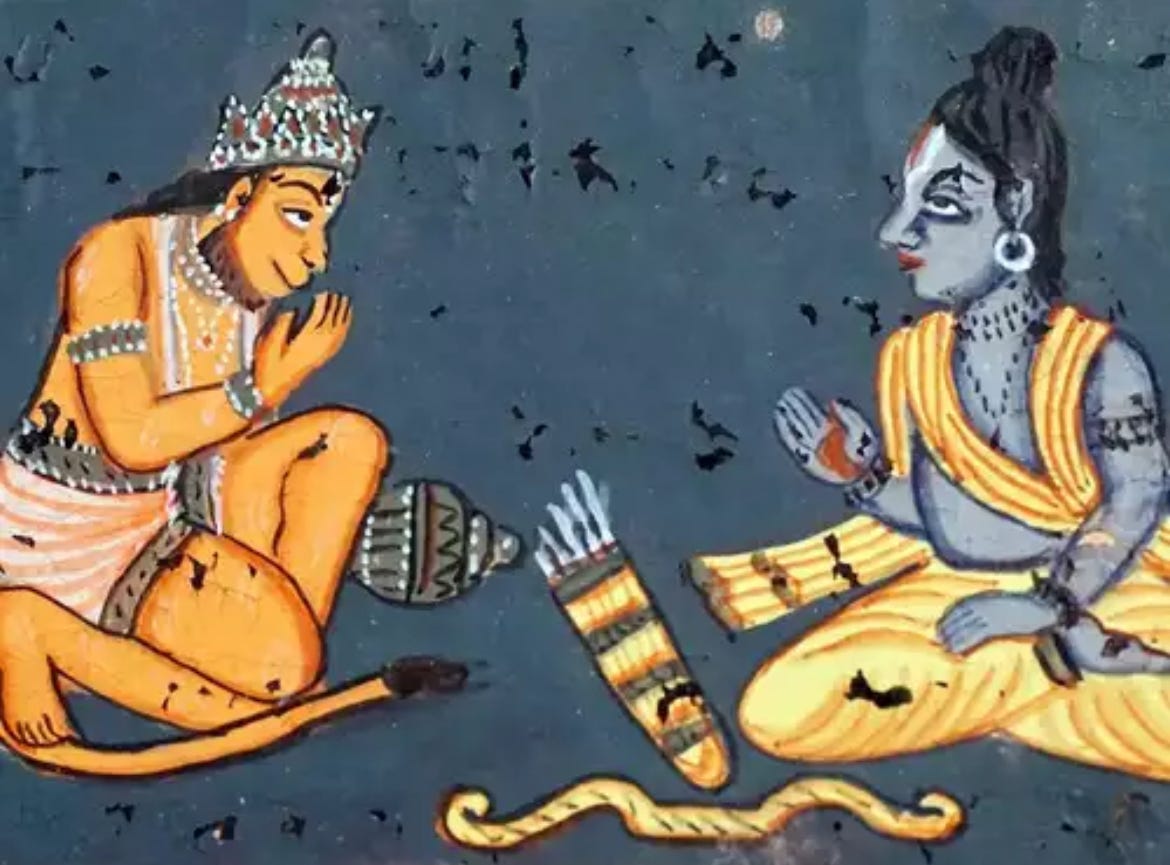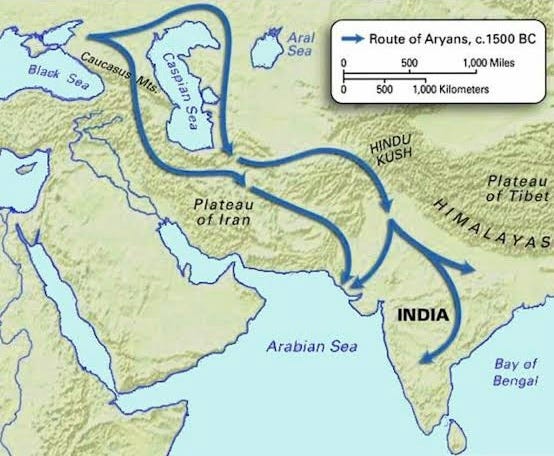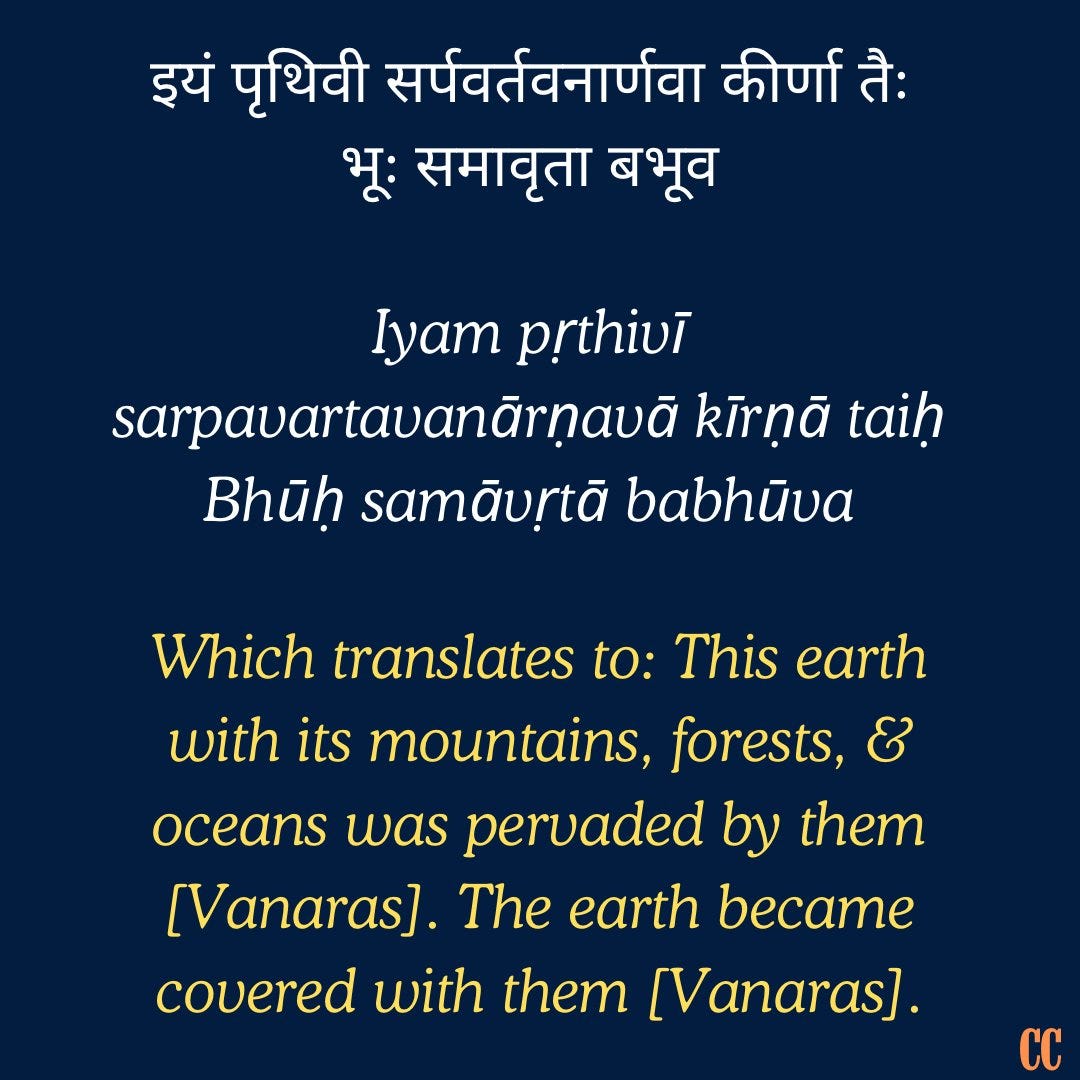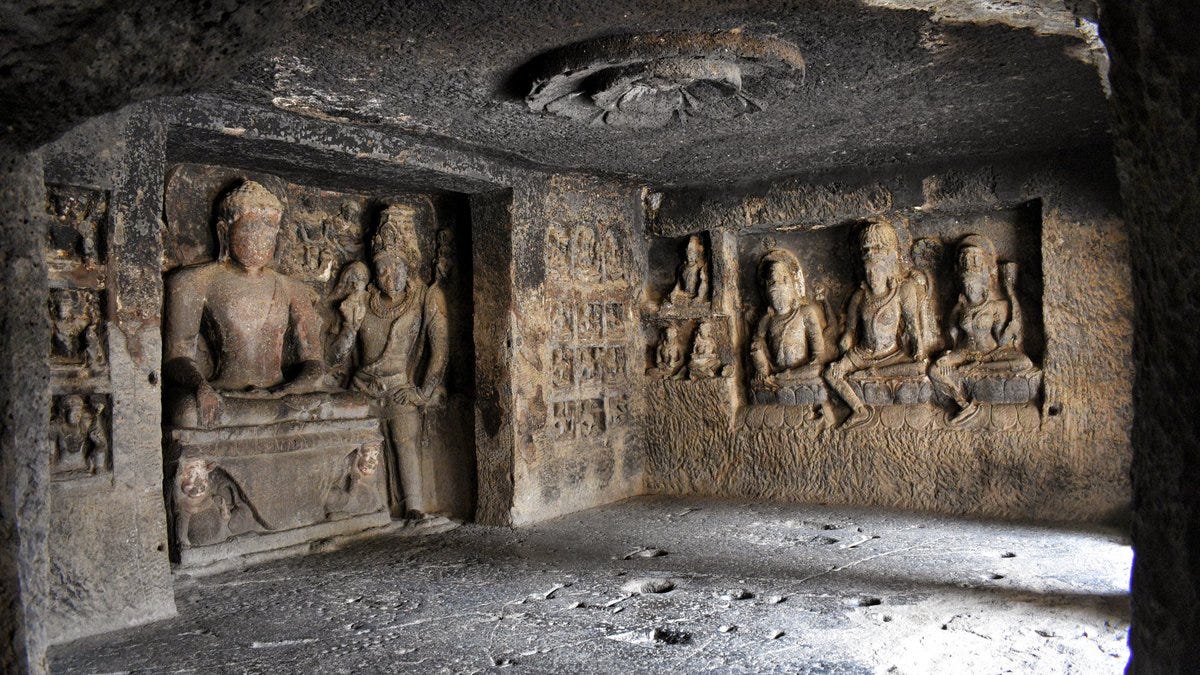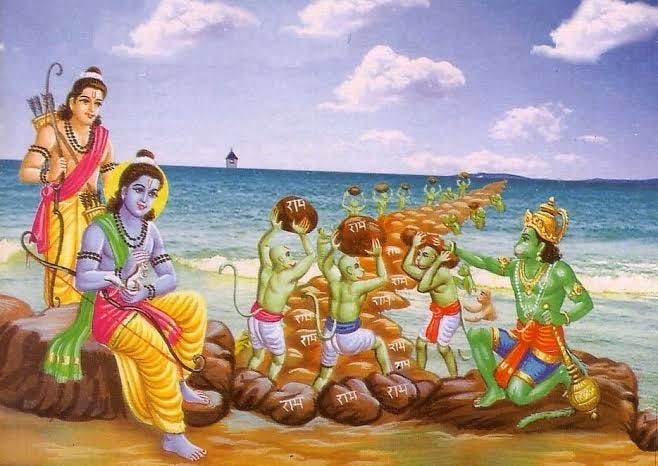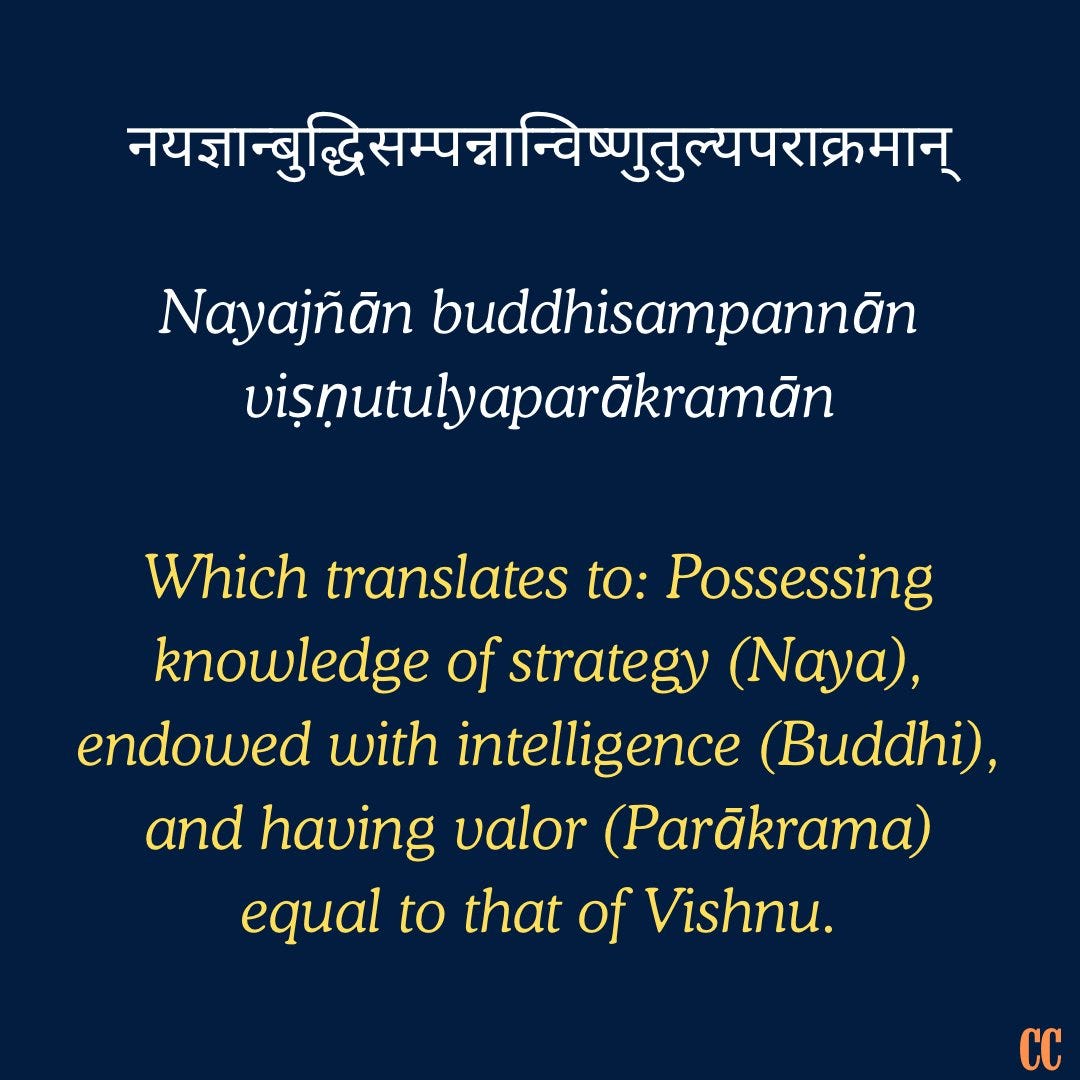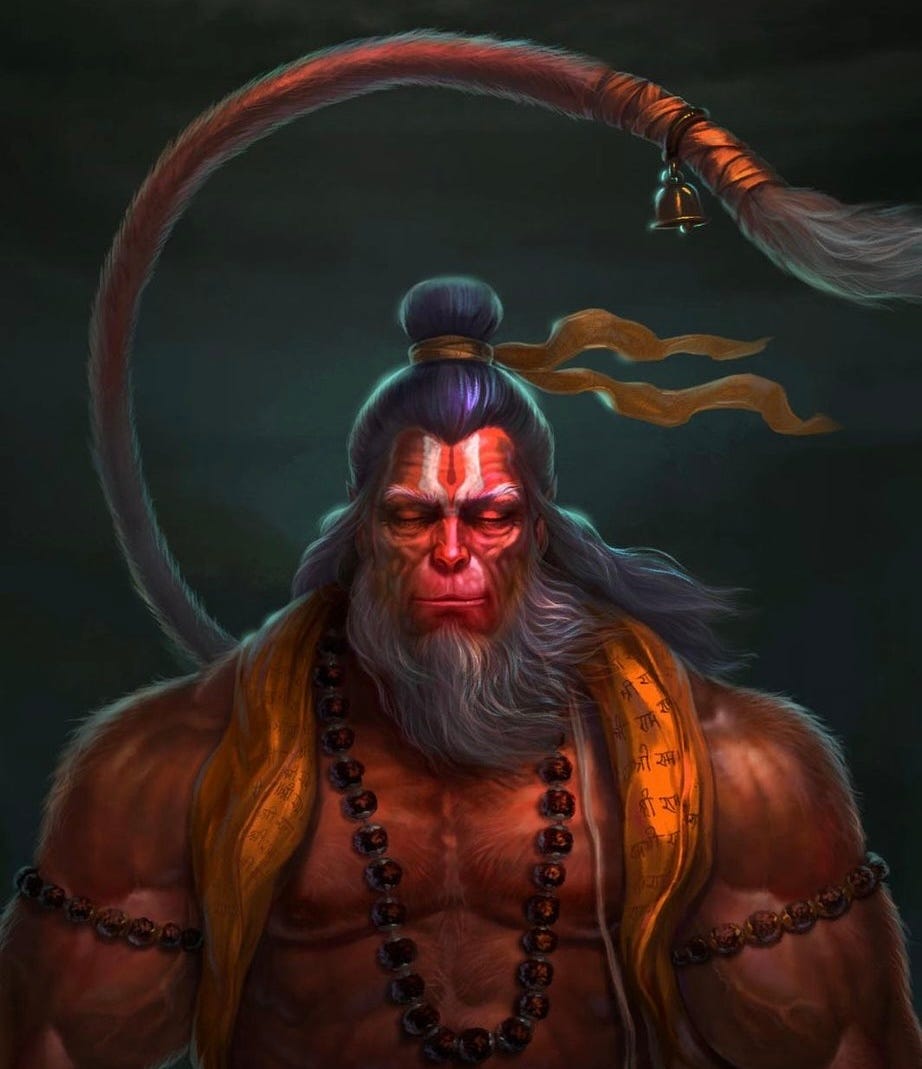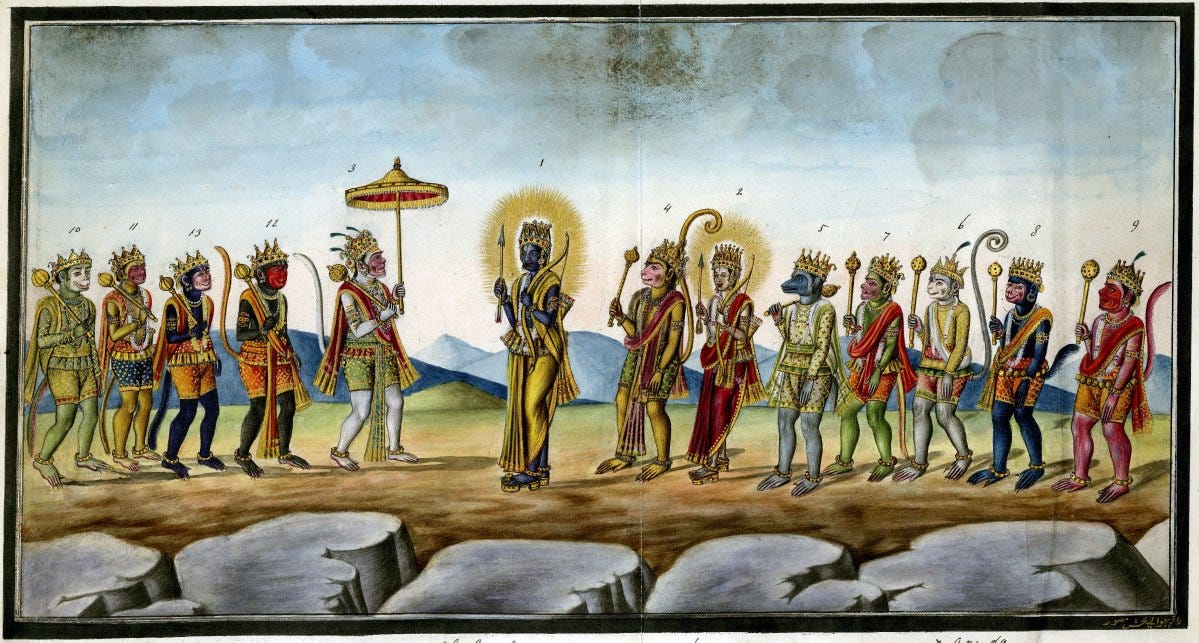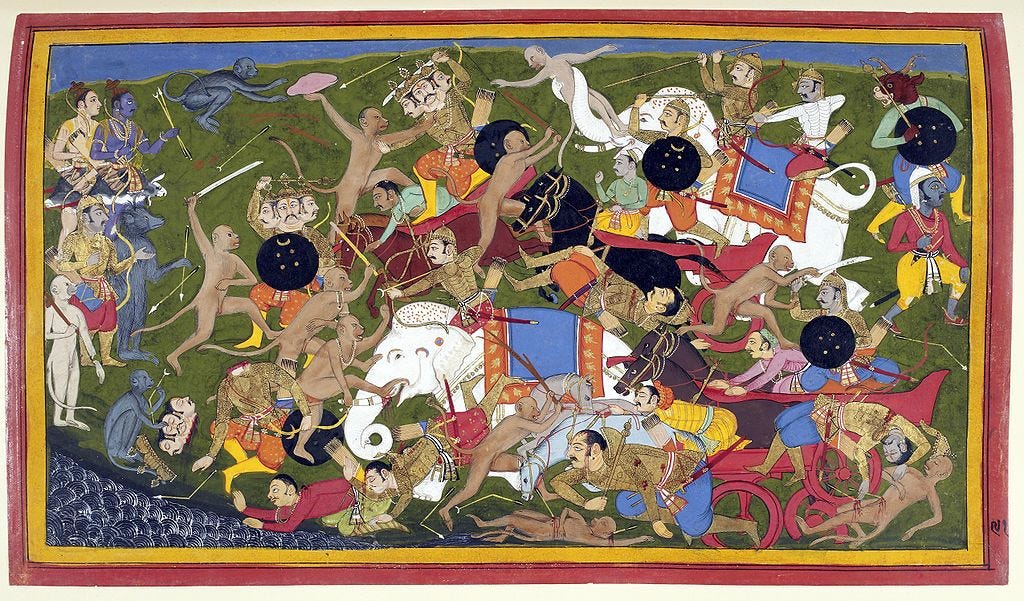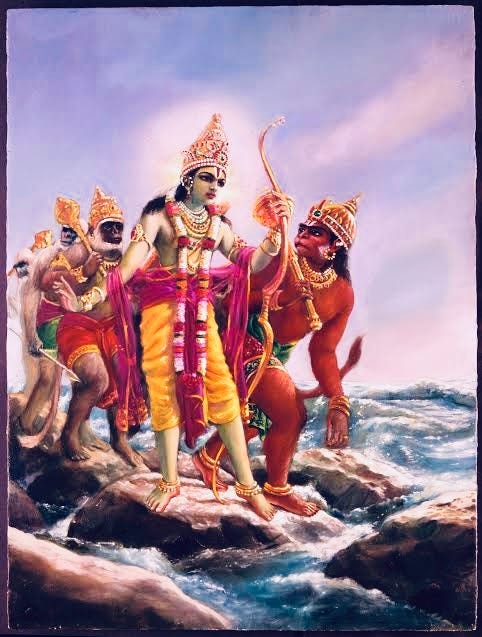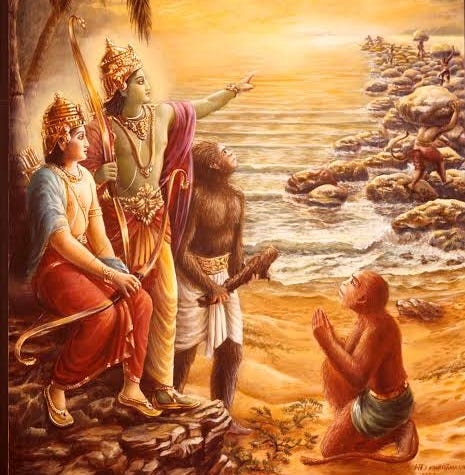Who Really Were The Vanaras?
Monkeys, primitive tribes, a different race of humans—or perhaps an entirely different species? With Shlokas from the Valmiki Ramayana, let’s settle this debate once & for all.
The answer, surprisingly, is none of the above! The Vanaras were not monkeys, nor were they primitive tribes or some racial anomaly. So, what exactly were they?
Valmiki states it plainly: वनचरिणः (Vanchariṇah) — “forest-dwellers.” In simpler terms, they were people who roamed the forests.
The idea that they were primitive or biologically distinct from others is entirely baseless.
In fact, Valmiki makes it crystal clear in the text, that the Vanaras were genetically the same as city-dwellers.
The very same Rishis fathered the Vanaras, the Rakshasas (like Ravana), and the urban dwellers of Ayodhya & other cities.
The word ‘Vanara’ itself gives us a clue. It breaks down into ‘Van’ (forest) + ‘Nara’ (man)—meaning forest-dwelling people. Simple and easy, right?
Wrong. Because complicated lies spread much faster than simple truths! I recently came across a YouTube channel (with thousands of subscribers) peddling the false claim that ‘Va’ means a precursor to ‘Nara’ (man)—suggesting the Vanaras were “almost human.”
There are many conspiracy theories where people try to prove that the Vanaras were Neanderthals or something similar. All of that is utter nonsense.
Be cautious of such pseudo-etymologies and misinformation peddlers!
So, how did we end up associating the Vanaras with monkeys? There are two key reasons for this:
1. Language Evolution:
Over time, the scope of words tends to shift or narrow. The term ‘Vanara’ may have lost its broader meaning and come to refer only to monkeys in later texts and interpretations. Words in languages change their meaning overtime. And it’s not a big deal.
2. Animal-Inspired Attire:
The stereotypes do carry a semblance of truth. The Vanaras often wore headdresses and tails resembling monkeys. At first glance, this might seem bizarre, but it’s actually quite logical.
Even today, several tribal communities in India—like the Nagas, Bhils, Bastar, Konyaks, Todas, Baigas, Gonds, & Rathwas—wear animal-inspired costumes for ceremonies and festivals. The Vanaras were no different.
For example, The Nagas are known for their elaborate headdresses adorned with boar tusks, hornbill feathers, animal horns, and dyed goat hair. These headdresses symbolize bravery in warfare and are worn during festivals like the Hornbill Festival.
For more examples and additional details on this topic, please check out the pictures attached here. ⬇️
Some Vanaras even wore attire resembling bears! Valmiki’s Ramayana mentions this in passing.
If we were to take such shlokas literally, it would imply that bears gave birth to monkeys—which makes no sense since it is biologically impossible, & clearly isn’t what Valmiki meant.
This idea of the Vanaras’ attire being removable is further reinforced when Sugriva sees Rama and Lakshmana approaching.
He instructs Hanuman to “leave behind his monkey form” (कपिरूपं परित्यज्य / Kapirūpaṁ parityajya) before meeting them.
There are many such instances like this in the Valmiki Ramayan where Vanaras are asked to leave behind their monkey form.
This strongly suggests that the “monkey form” was an outfit or disguise, not a biological feature.
Another popular myth is that the Vanaras were confined to South India, with some low IQ people trying to somehow link this to the outdated Aryan-Dravidian theory (yes, someone did actually say that to me).
This claim is entirely baseless. The Valmiki Ramayana shows that the Vanaras existed throughout the subcontinent, not just the South.
Unfortunately, movies and TV shows have popularized the depiction of Vanaras as literal monkeys, reinforcing these incorrect assumptions.
But earlier depictions tell a different story.
For example, sculptures at Ellora show Vanaras with human-like proportions, wearing headdresses and tails. This artistic interpretation aligns closely with Valmiki’s description.
Living amidst harsh forest conditions made the Vanaras exceptionally strong — but don’t mistake them for mere brutes.
Contrary to popular belief, they were highly intelligent and skilled. Valmiki emphasizes this multiple times.
At one point in the tale, Valmiki refers to the Vanaras as:
Nayajñān buddhisampannān viṣṇutulyaparākramān
This line praises the Vanaras as a group who embody a combination of strategic knowledge, wisdom & unmatched bravery—worthy enough to draw a comparison to Vishnu Himself!
Take Hanuman, for instance. He is not just a warrior with immense physical prowess, but he was also a brilliant diplomat.
Example: His sharp mind is seen when he decides to approach Sita in Lanka in a humble, non-threatening form, carefully choosing his words to gain her trust.
And Hanuman wasn’t the only one with complex characterization. Other Vanaras like Vali, Sugriva, Nala, Neela, and Tara also display nuanced personalities throughout the epic.
So, where does all this leave us? The Vanaras were neither monkeys nor a separate species.
They were forest-dwelling humans—strong, intelligent, and deeply connected to nature.
Their portrayal as monkeys in modern media is a misunderstanding that has evolved over time (thanks to later retellings and media).
The Vanaras weren’t just background characters; they played pivotal roles in the Ramayana, contributing both through strength & intellect.
From Hanuman’s wisdom to Sugriva’s leadership—they are a reminder that those who dwell in the forest are no less capable than city-dwellers.
Let’s not reduce the Vanaras to mere caricatures of monkeys. Instead, let’s honor their true essence—humans, shaped by the wilderness, wearing accessories & attires that made them resemble monkeys, strong in both body and mind.
That's a wrap! If you enjoyed this article:
Follow me for more of these informative deep dives. Do share this article to spread the word! ;)





